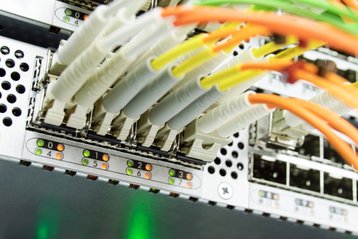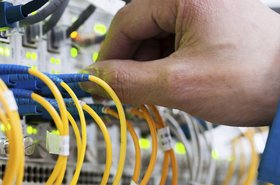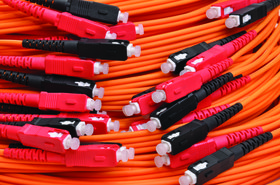The 5G network rollout and the Internet of Things (IoT) are already contributing to a massive increase in data creation. International Data Corporation (IDC) predicts that there will be 41.6 billion connected devices generating 79.4 zettabytes of data by 2025, and Gartner says that in just two years (2022) 70 percent of data will be created outside of the data center at the edge.
Back in the data center, artificial intelligence (AI), machine learning (ML), and hyper-convergence are pushing the need for 800Gb speeds and beyond, which are also driving the allowable latency lower and lower. Data centers have reached the optical power budget limit that their existing cable plant can carry—they need more optical headroom!
It’s becoming difficult for data center managers to tweak the fiber for increased speed and scale by adding cross-connects to give it more flexibility; adding more components such as optical switches, or adding more optical tabs for security. Like growing a sunflower in a mason jar, it’s inevitable that the plant will exceed the allowable headroom. And that is the point many data centers are at right now, their existing fiber installation has reached a pre-defined budget and many are at their theoretical limit.
Fiber capacity reached; managers seemingly handcuffed
As optical headroom decreases, the fiber plant loss approaches the allowable power budget for connectivity loss, which yields a byproduct of poor network performance. Given the fact that data speeds are rapidly moving from 40Gb to 400Gb to 800Gb, the manufacturer’s electronic limitations are not enough. Data center managers need to make quick design decisions regarding the best means to support future applications over an ever-increasing data rate.
The natural reaction to mitigate a bit error rate (BER) issue is to boost the signal, but this action has a limitation at which the non-linearity effects will worsen the BER. Additionally, boosting the signal does not resolve the BER issue caused by signal-dependent power penalties such as modal noise, modal partition noise as well as relative intensity noise. Another option is to add repeaters and amplifiers however, this mitigation maneuver will add even more dB loss. That leaves adding more channels, which takes up more space and requires cable infrastructure upgrades.
Future-proofing fiber for optical headroom
Hyper-converged data center managers, and especially those looking to achieve the lowest latency possible for financial transactions, need the optical headroom that only advanced fiber systems with the lowest total channel connection loss can offer.
Finding optical fiber with the most optical headroom is not rocket science, a simple comparison of system requirements will do. For example, the multimode requirement for a 100Gbase transceiver allows for a max power budget of 1.9 dB. Some ultra-low loss optical fiber channel solutions offer 1.2 dB of total channel connection loss delivering 0.7 dB of headroom; however, the best optical headroom available for a multimode optical fiber solution provides a total channel connection loss of 0.75dB delivering 1.15 dB of headroom which is an improvement of nearly 0.5 dB. over other manufacturer’s best solutions. It’s important to note that this dB budget loss comparison needs to be derived by measuring cassette-to-cassette (permanent link) and patch cord-to-patch cord (channel link) for the most accurate readings.
Conclusion
Data speeds are rapidly increasing which in turn, is straining the manufacturer’s fiber-optic limits. Upgrading the fiber plant is inevitable because the existing transport is bloated, causing packet loss for critical payloads. Perhaps, Chief Brody captured this situation best when comparing the size of Jaws with Quint’s vessel, “We’re going to need a bigger boat.”
When considering a fiber upgrade, optical headroom must be a benchmark taken into account if future-proofing the network for an extended period of time is to be realized. Maximizing the amount of optical headroom today makes good sense because it will help alleviate sluggish network performance now, and is a sound strategy to meet the needs of any future applications that will quickly test the limits of even ultra low-loss fiber channel connections.





